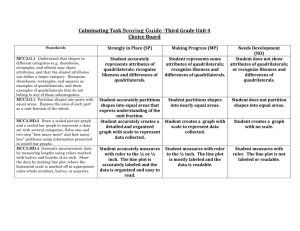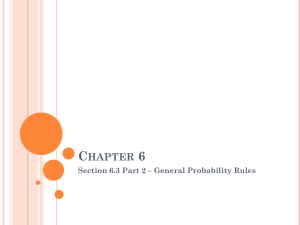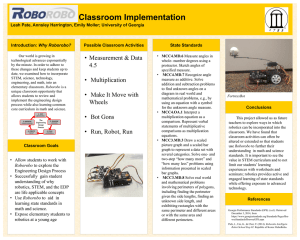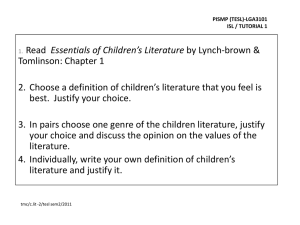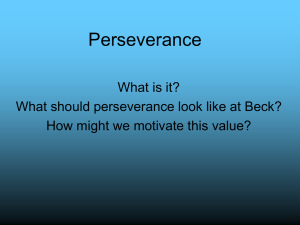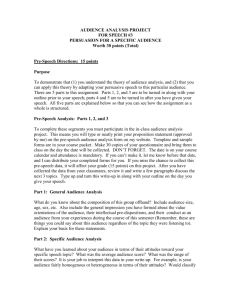Fourth Grade Unit 7_Zoo Culminating Task Scoring Guide
advertisement
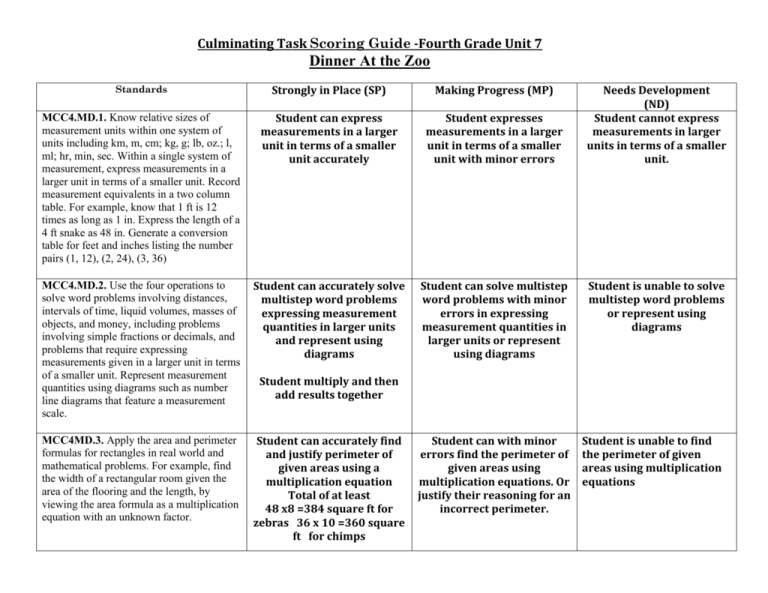
Culminating Task Scoring Guide -Fourth Grade Unit 7 Dinner At the Zoo Standards Strongly in Place (SP) Making Progress (MP) Needs Development (ND) Student cannot express measurements in larger units in terms of a smaller unit. MCC4.MD.1. Know relative sizes of measurement units within one system of units including km, m, cm; kg, g; lb, oz.; l, ml; hr, min, sec. Within a single system of measurement, express measurements in a larger unit in terms of a smaller unit. Record measurement equivalents in a two column table. For example, know that 1 ft is 12 times as long as 1 in. Express the length of a 4 ft snake as 48 in. Generate a conversion table for feet and inches listing the number pairs (1, 12), (2, 24), (3, 36) Student can express measurements in a larger unit in terms of a smaller unit accurately Student expresses measurements in a larger unit in terms of a smaller unit with minor errors MCC4.MD.2. Use the four operations to solve word problems involving distances, intervals of time, liquid volumes, masses of objects, and money, including problems involving simple fractions or decimals, and problems that require expressing measurements given in a larger unit in terms of a smaller unit. Represent measurement quantities using diagrams such as number line diagrams that feature a measurement scale. Student can accurately solve multistep word problems expressing measurement quantities in larger units and represent using diagrams Student can solve multistep word problems with minor errors in expressing measurement quantities in larger units or represent using diagrams Student is unable to solve multistep word problems or represent using diagrams MCC4MD.3. Apply the area and perimeter formulas for rectangles in real world and mathematical problems. For example, find the width of a rectangular room given the area of the flooring and the length, by viewing the area formula as a multiplication equation with an unknown factor. Student can accurately find and justify perimeter of given areas using a multiplication equation Total of at least 48 x8 =384 square ft for zebras 36 x 10 =360 square ft for chimps Student can with minor errors find the perimeter of given areas using multiplication equations. Or justify their reasoning for an incorrect perimeter. Student is unable to find the perimeter of given areas using multiplication equations Student multiply and then add results together SMP Strongly in Place Satisfactory Making Progress/ Developing Area of Concern Make sense of problems and persevere in solving them. The student explained the problem and showed perseverance by identifying the purpose of the problem and selected and applied an appropriate problem solving strategy that lead to a thorough and accurate solution. The student explained the problem and showed perseverance when identifying the purpose of the problem, and selected an applied and appropriate problem solving strategy that lead to a generally complete and accurate solution. The student explained the problem and showed some perseverance in identifying the purpose of the problem, and selected and applied an appropriate problem solving strategy that lead to a partially complete and/or partially accurate solution. The student was unable to explain the problem and showed minimal perseverance when identifying the purpose of the problem. Attends to precision The student was precise by clearly describing their actions and strategies, while showing understanding and using above-grade-level appropriate vocabulary in their process of finding solutions. The student was precise by clearly describing their actions and strategies, while showing understanding and using grade-level appropriate vocabulary in their process of finding solutions. The student was precise by clearly describing their actions and strategies, while showing understanding and using appropriate vocabulary in their process of finding solutions. The student was unclear in their thinking and was unable to communicate mathematically. Reasoning and Explaining The student expressed and justified their opinion both quantitatively and abstractly using a variety of numbers, pictures, charts and words. The student expressed and justified their opinion both quantitatively and abstractly using numbers, pictures, charts and/or words. The student expressed or justified their opinion either quantitatively OR abstractly using numbers, pictures, charts OR words. The student was unable to express or justify their opinion quantitatively or abstractly using numbers, pictures, charts or words. Models and use of tools The student selected multiple efficient tools and correctly represented the tools to reason and justify their response. In addition this students was able to explain why their tool/ model was efficient The student selected an efficient tool and/or drew a correct representation of the efficient tool used to reason and justify their response. The student selected appropriate tools or drew a correct representation of the tools used to reason and justify their response. The student was unable to select an appropriate tool, draw a representation to reason or justify their thinking. Seeing structure and generalizing The student identified various patterns and structures in the number system and noticed connections to multiple areas of mathematics and real-life. The student identified patterns or structures in the number system and noticed connections to other areas of mathematics and real-life. The student identified a pattern or structure in the number system and noticed connections to other areas of mathematics or reallife. The student was unable to identify patterns, structures or connect to other areas of mathematics and/or real-life.

